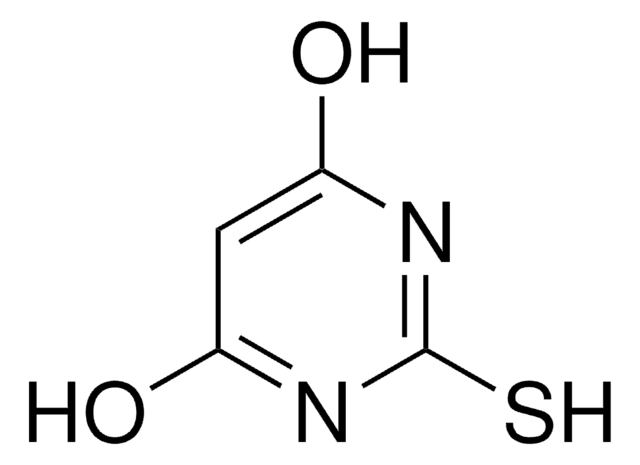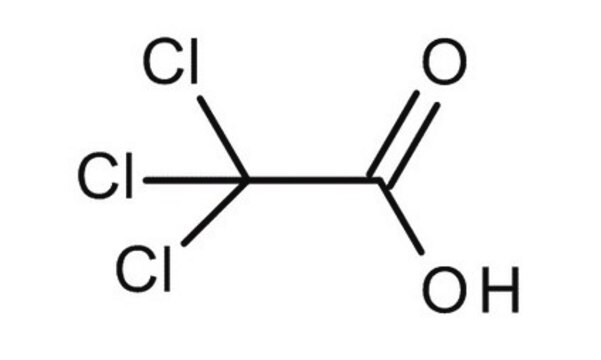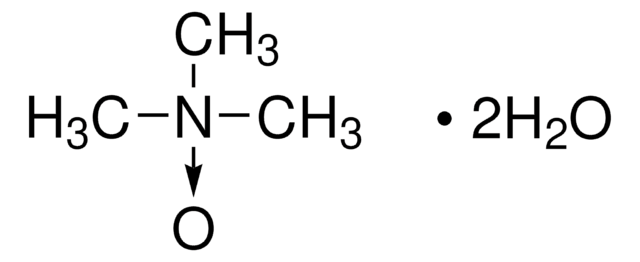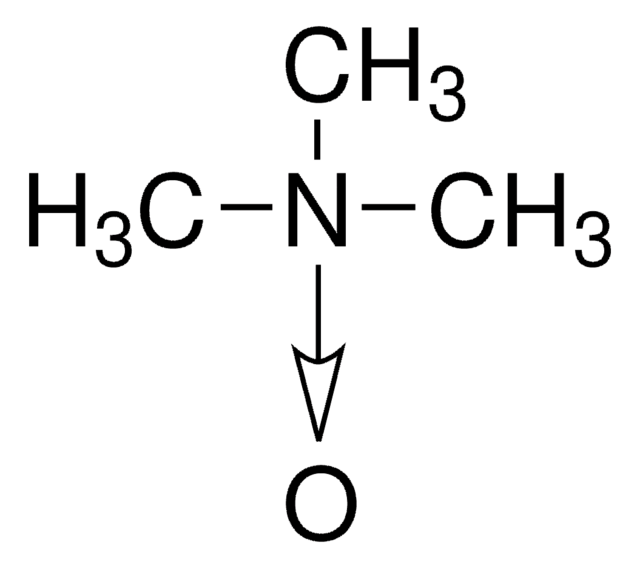T6399
Trichloroacetic acid
ACS reagent, ≥99.0%
Synonyme(s) :
TCA
About This Item
Produits recommandés
Qualité
ACS reagent
Niveau de qualité
Densité de vapeur
<1 (vs air)
Pression de vapeur
1 mmHg ( 51 °C)
Essai
≥99.0%
Impuretés
Substances darkened by sulfuric acid, passes test
≤0.01% insoluble matter
Résidus de calcination
≤0.03%
Indice de réfraction
n20/D 1.62 (lit.)
pb
196 °C (lit.)
Pf
54-58 °C (lit.)
Solubilité
H2O: 1 g/10 mL
Densité
1.62 g/mL at 25 °C (lit.)
Traces d'anions
chloride (Cl-): ≤0.002%
nitrate (NO3-): ≤0.002%
phosphate (PO43-): ≤5 ppm
sulfate (SO42-): ≤0.02%
Traces de cations
Fe: ≤0.001%
heavy metals (as Pb): ≤0.002%
Groupe fonctionnel
carboxylic acid
chloro
Température de stockage
2-8°C
Chaîne SMILES
OC(=O)C(Cl)(Cl)Cl
InChI
1S/C2HCl3O2/c3-2(4,5)1(6)7/h(H,6,7)
Clé InChI
YNJBWRMUSHSURL-UHFFFAOYSA-N
Vous recherchez des produits similaires ? Visite Guide de comparaison des produits
Application
- Trichloroacetic acid has been used for the precipitation of sLRP (soluble circulating low density lipoprotein receptor-related protein-1) isolated from plasma.
- It has been used for the extraction of ascorbic acid from plant samples. It has also been used for the preparation of ascorbate standards for ascorbate assay.
- It has been used for the precipitation of IMAC (immobilized metal ion affinity chromatography)-isolated phosphoproteins.
Produit(s) apparenté(s)
Mention d'avertissement
Danger
Mentions de danger
Classification des risques
Aquatic Acute 1 - Aquatic Chronic 1 - Eye Dam. 1 - Skin Corr. 1A
Code de la classe de stockage
8B - Non-combustible corrosive hazardous materials
Classe de danger pour l'eau (WGK)
WGK 2
Point d'éclair (°F)
Not applicable
Point d'éclair (°C)
Not applicable
Équipement de protection individuelle
Eyeshields, Faceshields, Gloves, type P3 (EN 143) respirator cartridges
Faites votre choix parmi les versions les plus récentes :
Déjà en possession de ce produit ?
Retrouvez la documentation relative aux produits que vous avez récemment achetés dans la Bibliothèque de documents.
Notre équipe de scientifiques dispose d'une expérience dans tous les secteurs de la recherche, notamment en sciences de la vie, science des matériaux, synthèse chimique, chromatographie, analyse et dans de nombreux autres domaines..
Contacter notre Service technique






